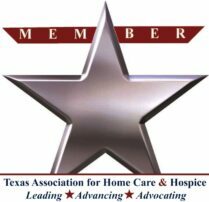Nursing Teaching on Lifestyle Measures to be Observed by Individuals with Congestive Heart Failure
Nurse educated the patient and caregiver on the lifestyle measures to be observed by individuals with congestive heart failure as follows:
- Reduced output of blood from the heart, in individuals with congestive heart failure, can result in low blood pressure and hypotensive symptoms of dizziness and lightheadedness. Observe compliance with log maintenance of everyday blood pressure and heart rate readings. Report to your physician regarding any consistent systolic readings below 90 and above 160. Report consistent diastolic readings below 60 and above 90. Report any consistent heart rate readings below 55 and above 100. Observe compliance with all cardiac medications, as prescribed.
- Persistent back-up of fluid from the heart chambers can lead to increased workload on the heart, progressive deterioration of heart function, further weakening of heart muscle, and worsening of heart failure. Individuals can present with swelling of the lower legs, with pitting upon applying slight pressure. Keep a close watch on the severity of pitting and report to your physician regarding any progressively increasing pedal edema. Observe compliance with intake of diuretic medications prescribed, if any. While resting, observe compliance with elevation of feet above heart level, which can help return the fluid towards the heart and reduce the swelling. Observe compliance with sodium intake limitations, as recommended.
- Fluid back-up into the lungs in individuals with heart failure can lead to fluid retention in the chest, difficulty in gas exchange in the lungs, poor oxygen pick-up, and exacerbation of shortness of breath. Observe compliance with log maintenance of everyday oxygen saturation readings. Report to your physician regarding any oxygen saturations consistently below 90. Oxygen dependent individuals must observe compliance with oxygen supplementation recommendations and report any need for increase in oxygen requirements. Observe compliance with planning of activities ahead of time, based on endurance levels.
- Reduced output of oxygenated blood from the heart, in individuals with heart failure, can result in reduced blood and oxygen supply to all the vital organs, contributing to compromised organ function. Reduced blood and oxygen supply to heart muscle, in individuals with heart failure, can result in further damage to the heart muscle, worsening of heart failure, and development of arrhythmias. Keep a close watch and report to your physician regarding any signs and symptoms of arrhythmia, such as, fluttering in the chest, racing or abnormally slow heartbeat, poorly felt pulse, dizziness, any episodes of loss of consciousness, chest pain and/or discomfort, and fainting. Observe compliance with intake of anti-arrhythmic and other cardiac medications, as ordered.
- Fluid back-up and edema due to heart failure can contribute to acute weight gain. Observe compliance with log maintenance of everyday weight recording. Any acute increase of weight, more than 2 pounds in 2 consecutive days or more than 5 pounds in one-week duration, indicates significant fluid retention and deteriorating cardiac function, and must be reported to the physician.
- Reduced blood and oxygen supply to heart muscle, in individuals with heart failure, can result in episodes of chest pain and discomfort. Keep a close watch and report to your physician regarding any chest pain and/or discomfort, how insignificant it may be.
- Observe compliance with recommendations for heart healthy diet and fluid volume intake limitations, if any. Limit sodium intake to no more than 2 grams or 2000 mg per day. Make healthy food choices that are low in saturated and trans fats.
- Observe compliance with recommendations for limitations on alcohol consumption, if applicable.
- Reduced blood supply to brain and muscles can result in increased confusion, frequency of dizzy episodes, muscle pain, fatigue, and reduced endurance to activity, thus contributing to falls and accidents. Observe compliance with use of assistive device for fall and accident prevention. Seek therapy assistance for planned and safe execution of activities. Always, seek for caregiver assistance, as needed.


Recent Comments